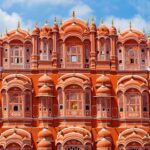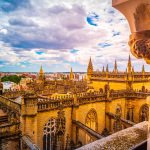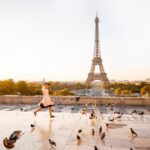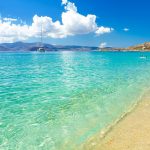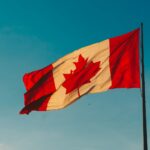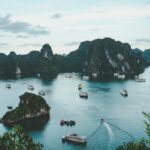Best Things To Do In Istanbul
Introduction
Originally founded as Byzantium by the Greeks, conquered by Persians, captured by Spartans, rebuilt by Constantine, and eventually conquered by the Ottomans, İstanbul has lived a long and spicy history. Coveted by empires across the centuries, straddling Europe and Asia, Istanbul is one of the world’s great metropolises. Founded around 1000 BC, the colony of Byzantium grew into the Byzantine Empire’s grand capital of Constantinople and, after the Ottoman conquest of the city, retained its glorious place as the heart of their empire. The city (officially renamed Istanbul after the founding of the Turkish Republic) is liberally scattered with glorious remnants of its long and illustrious history, and the sightseeing here will impress even the most monument-weary visitor.
While the political clout moved to Ankara after the fall of the Ottoman Empire, İstanbul was left with iconic historical sites that would satisfy even the most world-weary of curious travelers. Yet this modern international city is continually in flux. New and exciting attractions regularly appear, rewarding awe-inspired visitors.
Istanbul Short Breaks
Top Rated Tourist Attractions
We’ve collected all the essential sights and experiences that should not be missed on a visit to Istanbul.
Aya Sofya (Hagia Sophia)
Built by the Byzantine Roman Emperor Justinian in the middle of the 6th century CE, the Hagia Sophia church was the world’s most significant interior space. When the Ottomans captured the city just a millennium later, it was converted into a mosque. Then, in 1935, it was declared a museum before returning to mosque status in 2020.
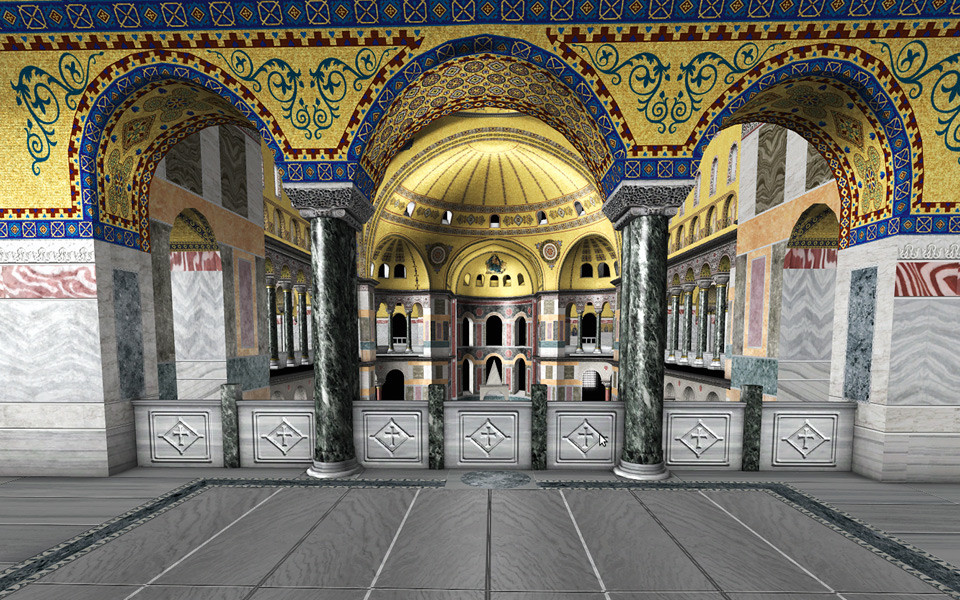
This changing history at the center of great empires and religions makes Hagia Sophia so unique. Inside, golden murals of Christian scenes look down to Islamic prayer niches. Inscriptions by crusaders etched into hand railings stand alongside massive medallions painted with the names of Allah. It is a remarkable journey through millennia of change and an unmissable thing to do in İstanbul.
Despite becoming a mosque, the building is still open to tourists. However, it closes 1 hour before prayer time and reopens 30 minutes afterward. As prayer happens five times daily, Hagia Sofia is open to tourists from 8:30 am to 11:30 pm, 1 pm to 2:30 pm, and 3:30 pm to 4:45 pm. On Fridays, it opens to visitors from 1:30 pm. Read more
Topkapi Palace (Topkapi Sarayi)
First built by Mehmet the Conqueror in the 15th century, this glorious palace beside the Bosphorus was where the sultans of the Ottoman Empire ruled over their dominions until the 19th century. The vast complex is a dazzling display of Islamic art, with opulent courtyards lined with intricate hand-painted tile-work, linking a warren of sumptuously decorated rooms, all bounded by battlemented walls and towers.
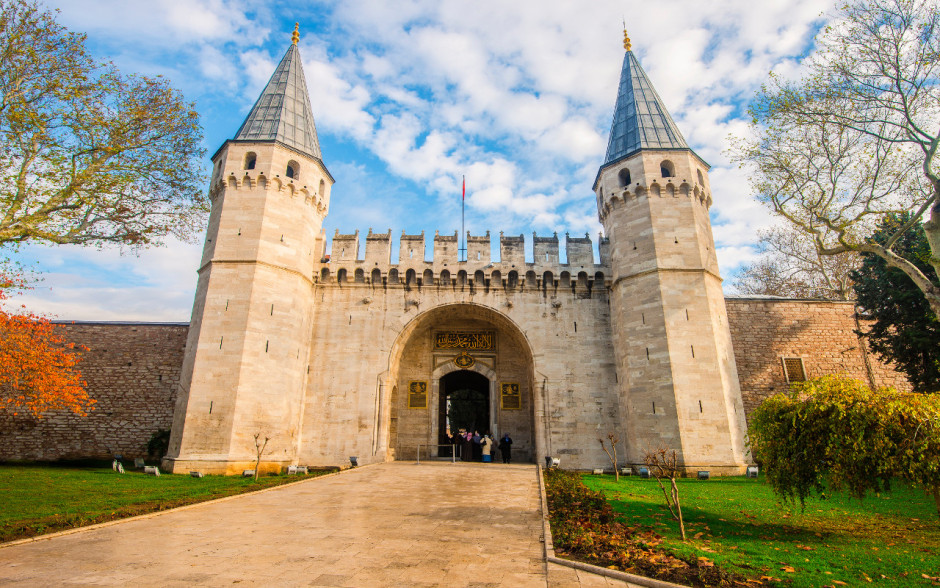
Of the many highlights here, the most popular are the Harem (where the sultan’s many concubines and children would spend their days) and the Second Court, where you can walk through the vast Palace Kitchens and stand in awe at the dazzling interior of the Imperial Council Chamber; and the Third Court, which contained the sultan’s private rooms. The Third Court also displays an impressive collection of relics of the Prophet Muhammad in the Sacred Safekeeping Room. It is home to the Imperial Treasury, where you’re greeted with a cache of glittering gold objects and precious gems that will make your eyes water. You’ll need at least half a day to see Topkapi Palace fully. Read more
Kapali Çarşi ( The Grand Bazaar)
The Ottomans built the Grand Bazaar shortly after they conquered the city in 1453. It is a warren of stalls selling anything you could want and lots of things you wouldn’t. Soaps, spices, trinkets, trays, carpets, clothes, bowls, baklava, masks, and mascara. But the most important and satisfying commodity at the Grand Bazaar is the endless commotion and energy.
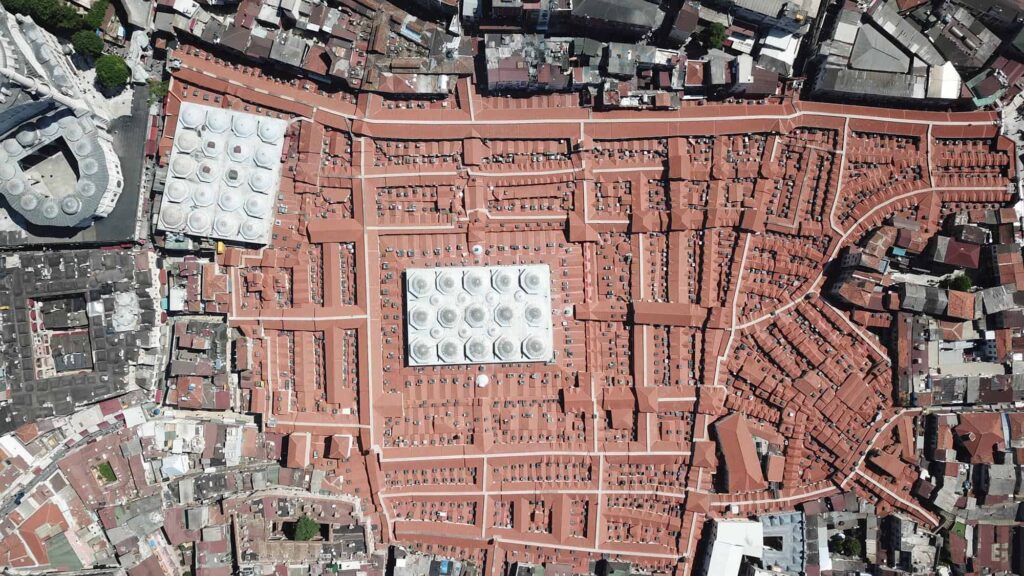
For many visitors, sightseeing in Istanbul is as much about shopping as museums and monumental attractions, and the Grand Bazaar is where everyone comes. This massive covered market is the world’s first shopping mall, taking up a whole city quarter, surrounded by thick walls, between the Nure Osmaniye Mosque and Beyazit Mosque. The Beyazit Mosque occupies the Theodosius I’s Forum site and has architecture inspired by the Aya Sofya.
Entrance to the bazaar is through one of 11 gates from where a maze of vaulted-ceiling laneways, lined by shops and stalls selling every Turkish souvenir and handicraft you could imagine, cover the area. The various trades are still mostly segregated into particular sections, which makes browsing easier. Near the bazaar’s Divanyolu Caddesi entrance is the Burned Column. Constantine the Great set up this stump (still 40 meters high) of a porphyry column in his forum. Until 1105, it bore a bronze statue of Constantine. Read more
Blue Mosque (Sultan Ahmet Camii)
Sultan Ahmet I’s grand architectural gift to his capital was this beautiful mosque, commonly known as the Blue Mosque today. Built between 1609 and 1616, the mosque caused a furor throughout the Muslim world when it was finished, as it had six minarets (the same number as the Great Mosque of Mecca). A seventh minaret was eventually gifted to Mecca to stem the dissent.
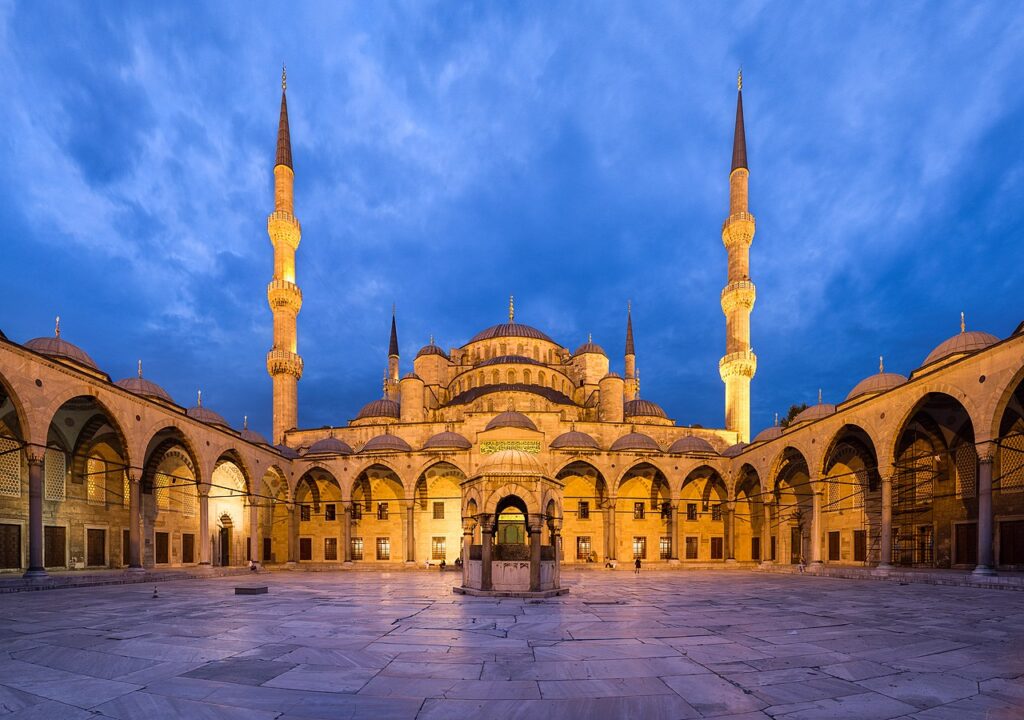
The mosque gets its nickname from its interior decoration of tens of thousands of Iznik tiles. The interior’s entire spatial and color effect makes the mosque one of the finest achievements of Ottoman architecture. An excellent sightseeing joy of a trip to Istanbul is wandering amid the gardens between the Blue Mosque and the Aya Sofya to experience their dueling domes in twin glory. Come at dusk for extra ambiance as the call to prayer echoes out from the Blue Mosque’s minaret.
Directly behind the Blue Mosque is the Arasta Bazaar, a great place for a shopping stop, as the handicraft shops sell high-quality souvenirs. If you’re not interested in a browse, head here to see the Great Palace Mosaic Museum, tucked between the Arasta Bazaar and the mosque. This small museum displays the 250-square-meter fragment of mosaic pavement that was unearthed in the 1950s here. Excellent information panels explain the mosaic floor’s recovery and subsequent rescue. Read more
Basilica Cistern (Yerebatan Sarniçi)
The Basilica Cistern is one of Istanbul’s most surprising tourist attractions. This huge, palace-like underground hall, supported by 336 columns in 12 rows, once stored the imperial water supply for the Byzantine emperors. Constantine the Great began the project, which was finished by Emperor Justinian in the 6th century.
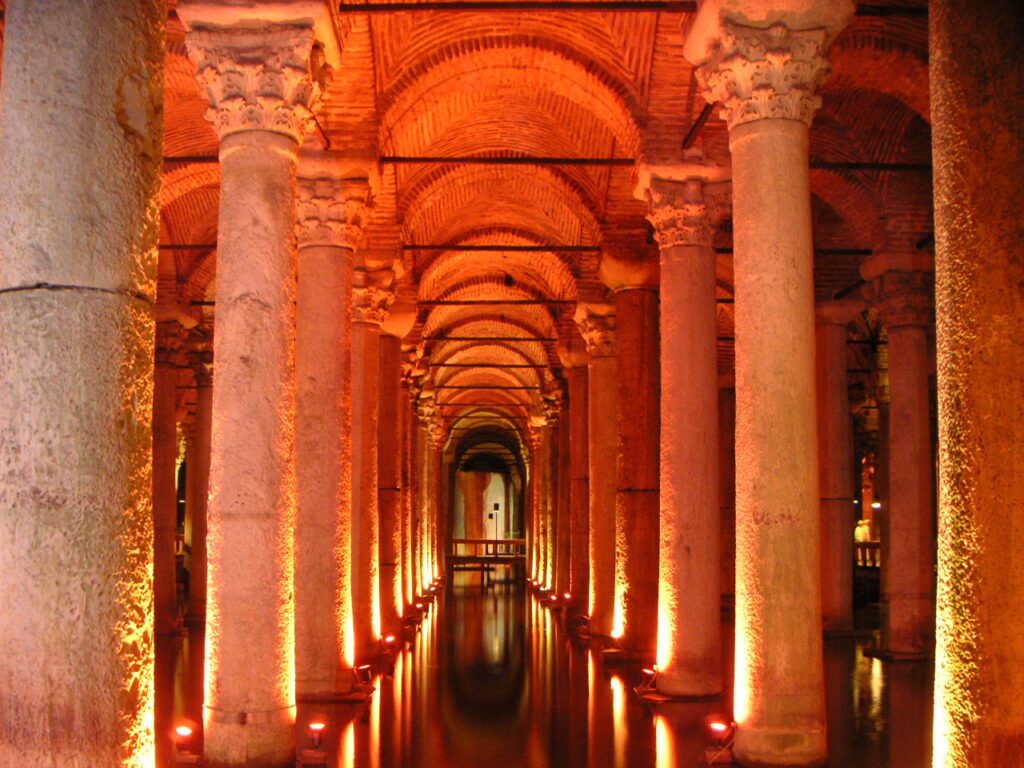
Many of the columns used in construction were recycled from earlier classical structures and feature decorative carvings. The most famous are the column bases known as the Medusa stones in the northwest corner with their Medusa head carvings. A visit here is very atmospheric, with beautifully lit columns and the soft, steady trickle of water around you.
Hippodrome
The ancient Hippodrome was begun by Septimius Severus in AD 203 and completed by Constantine the Great in AD 330. It was the center of Byzantine public life and the scene of splendid games and chariot races, but also factional conflicts. Today, there isn’t much of the Hippodrome left to see, except for a small section of the gallery walls on the southern side, but the At Meydani (park), which now stands on the site, is home to a variety of monuments.

On the northwest side is a fountain, presented to the Ottoman sultan by the German Emperor William II in 1898. Then, heading southwest are three ancient monuments: a 20-meter high Egyptian obelisk (from Heliopolis); the Serpent Column brought here from Delphi by Constantine; and a stone obelisk that originally was clad in gold-covered bronze plating until they were stolen by the soldiers of the 4th Crusade in 1204. Read more
Istanbul Archaeology Museum
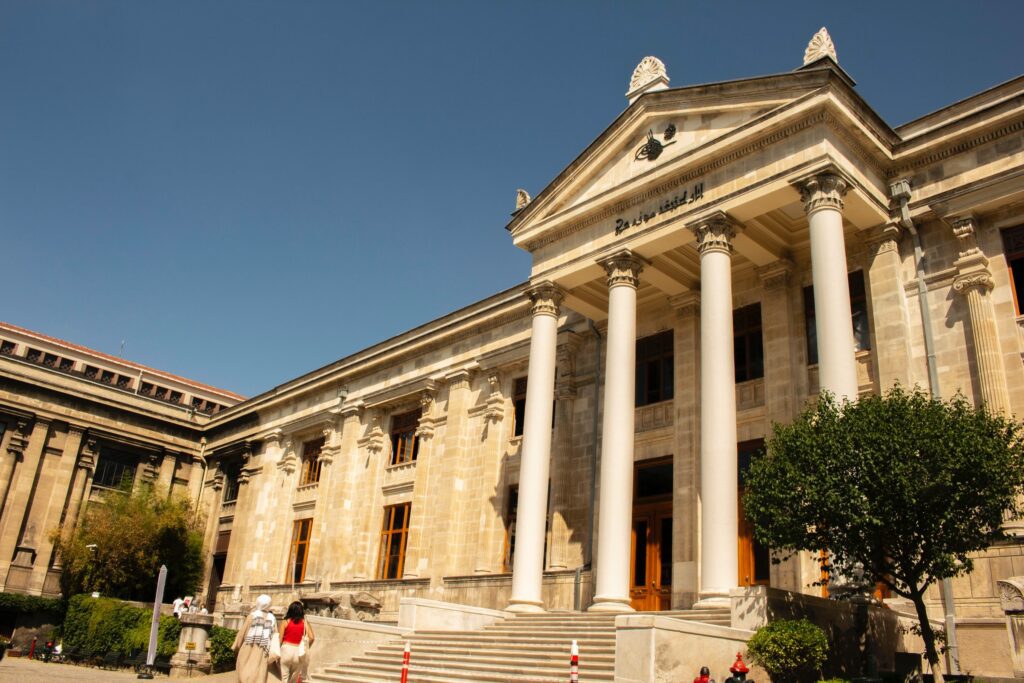 Just a hop, skip, and jump away from Topkapi Palace, this vital museum complex brings together a staggering array of artifacts from Turkey and throughout the Middle East, which sweeps through the vast breadth of the history of this region. There are three sections in the complex, each worthy of a visit: the Museum of the Ancient Orient, the main Archaeology Museum, and the Tiled Pavilion of Mehmet the Conqueror, which holds a staggering collection of ceramic art. As well as all thebeautifull artifacts on display, don’t miss the attractive Istanbul Through the Ages exhibit room in the main Archaeology Museum. Read more
Just a hop, skip, and jump away from Topkapi Palace, this vital museum complex brings together a staggering array of artifacts from Turkey and throughout the Middle East, which sweeps through the vast breadth of the history of this region. There are three sections in the complex, each worthy of a visit: the Museum of the Ancient Orient, the main Archaeology Museum, and the Tiled Pavilion of Mehmet the Conqueror, which holds a staggering collection of ceramic art. As well as all thebeautifull artifacts on display, don’t miss the attractive Istanbul Through the Ages exhibit room in the main Archaeology Museum. Read more
Süleymaniye Mosque

Sitting high on the hill above Sultanahmet district, the Süleymaniye Mosque is one of the most recognized landmarks of Istanbul. It was built for Süleyman the Magnificent by the famed Ottoman architect Sinan between 1549 and 75. The interior, dominated by its soaring 53-meter-high dome, is notable for its harmonious proportions and unity of design. Outside in the tranquil garden area is an interesting Ottoman cemetery that is also home to the türbes (tombs) of Sultan Süleyman and his wife, Haseki Hürrem Sultan (known in the west as Roxelana).
Spice Bazaar (Misir Çarsisi)
The Spice Bazaar is the place to get your foodie fix of lokum (Turkish delight), dried fruit, nuts, herbs, and spices. Much of the money that helped construct it came from the taxes the Ottoman government levied on Egyptian-made products, which is why its name in Turkish (Misir Çarsisi) means “Egyptian Market.” The Spice Bazaar is one of the most popular things to do, and at certain times of the day, it gets ridiculously crowded with huge tour groups from the docked cruise ships. Try to come before 11 am or after 4 pm.

Just next door to the Spice Bazaar’s main entrance is the stately Yeni Camii (New Mosque), which was begun in 1615 and finished in 1663 — that’s “new” for Istanbul. Taking a peek inside while you’re sightseeing in the area is worthwhile, as the interior is richly decorated with tile-work and liberal use of gold leaf. Read more
Dolmabahçe Palace
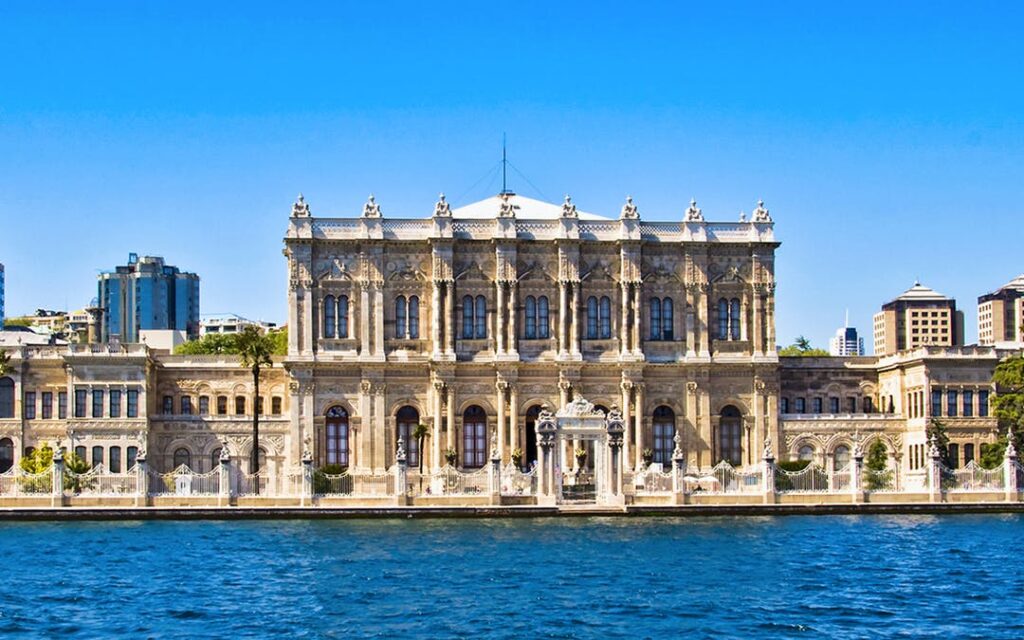
The sumptuous and ornate Dolmabahçe Palace shows the apparent influence of European decoration and architecture on the Ottoman Empire in the 19th century. Built by Sultan Abdülmecid I in 1854, it replaced Topkapi Palace as the primary residence of the Sultans. The formal gardens are punctuated with fountains, ornamental basins, and blooming flower beds, while inside, the sheer splendor and pomp of the Turkish Renaissance style are dazzling. The interiors mix Rococo, Baroque, Neoclassical, and Ottoman elements, with mammoth crystal chandeliers, liberal use of gold, French-style furniture, and dazzling frescoed ceilings.
Kariye Cami
Chora means “country” in Greek, and this beautiful Church (originally called the Church of St. Saviour of Chora) lay just outside old Constantinople’s city walls. The first Chora Church was probably built here in the 5th century. Still, you see the building’s 6th reconstruction as it was eradicated in the 9th century and underwent several facelifts from the 11th to 14th centuries.
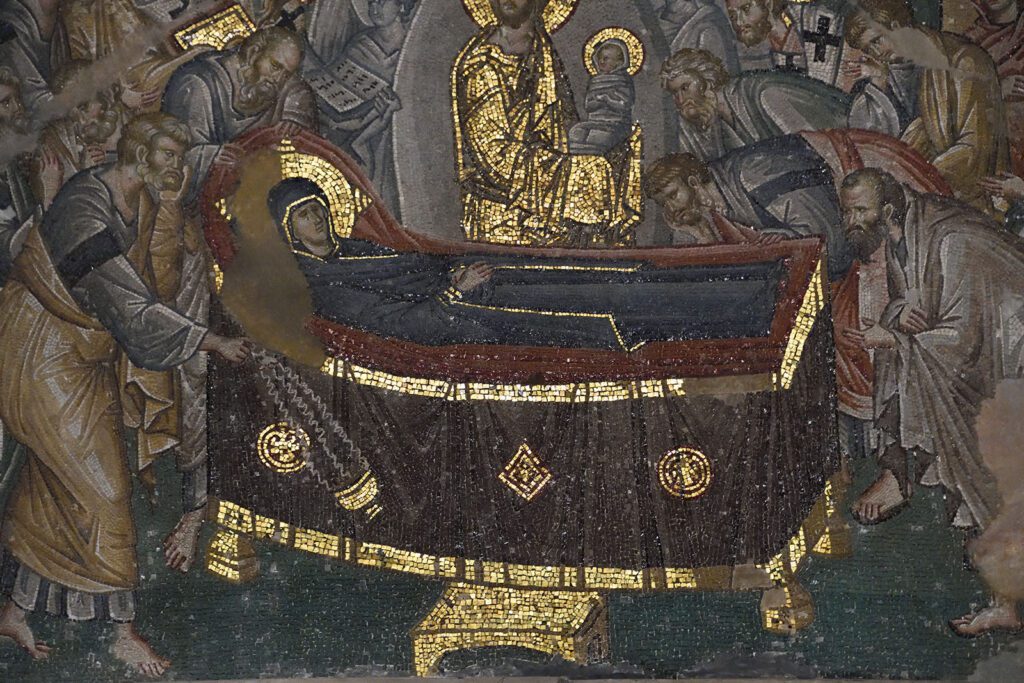
The church (now a mosque) is rightly world-famous for its fabulously vibrant 14th-century mosaics, preserved almost intact in the two narthexes and fragmentarily in the nave and the frescoes along the walls and domes. These incredible examples of Byzantine artistry cover many themes, from Christ’s genealogy to the New Testament stories.
Museum of Turkish and Islamic Arts
Housed in the palace of Ibrahim Pasa, Grand Vizier for Sultan Süleyman the Magnificent, this museum is a must-see attraction for anyone interested in Ottoman and Islamic art. The carpet collection on display here is vast and is heralded by textile experts as the world’s best. This is a prime place to peek at the dazzling array of styles of Turkish carpets (along with rugs from the Caucasus and Iran) across the centuries before setting out on a shopping mission to purchase your floor piece. There are also exquisite ceramics, calligraphy, and wood carving exhibits from the 9th century AD to the 19th century.
Little Aya Sofya
Before Emperor Justinian built the Aya Sofya, he had to test whether the building would work structurally, so he built this miniature version first. Its original name was the Church of Sergius and Bacchus, but the obvious architectural parallels with the Aya Sofya led to its long-held nickname becoming the building’s official title. During the Ottoman era, the church was converted into a mosque and still functions as a working mosque today. Although its proportions aren’t as grandiose as others in Istanbul, the building has been beautifully restored and is worth visiting. The walk here, down narrow alleyways lined with tall Ottoman-era buildings — some lavishly restored and others creaking their way into dilapidation — is a tranquil respite from central Sultanahmet. Take the time to have a glass of tea in Little Aya Sofya’s peaceful garden to sustain you for further sightseeing exploits.
Rüstem Pasa Mosque
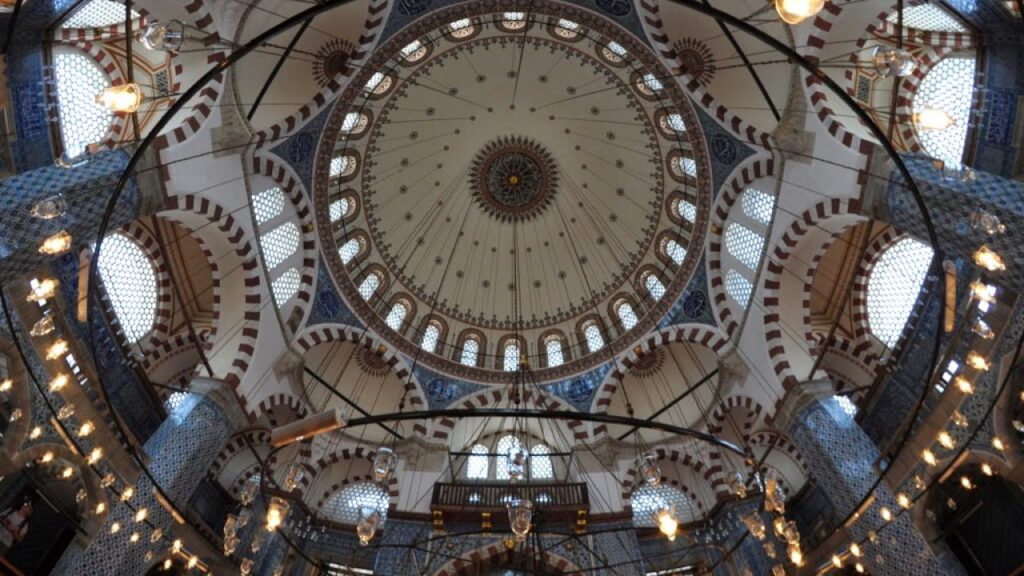
Possibly the most beautiful mosque in Istanbul, Rüstem Pasa Mosque is home to the most stunningly preserved Iznik tile panels in the city. Sure, the Blue Mosque may get all the glory. Still, it’s here — covering both the exterior courtyard walls and the mosque interior — that you’ll find the best examples of these gorgeously intricate hand-painted tiles in blues, reds, and greens. Even better, as it’s less known, you’re likely to be able to admire them up close without having to battle any crowds. Finding the mosque adds to the fun as it’s squirreled down a skinny lane near the Spice Bazaar, lined with market stalls and always bustling with life.
Yedikule (Old City Walls)

Although it’s a bit of a schlep on the suburban train to get out to Yedikule, this commanding fortress is well worth it. They were built in the 5th century by Emperor Theodosius II. The fortress comprised the southern section of Constantinople’s defensive walls. The mammoth arch (blocked up in the late Byzantine period) was known as Porta Aurea (Golden Gate), with doors plated in gold. When the Ottomans conquered the city, they used the fortress for defense and later as a prison and execution place. Yedikule has been restored in recent years, and you can climb up to the top of the battlements for superb views across the Sea of Marmara.
Galata Tower
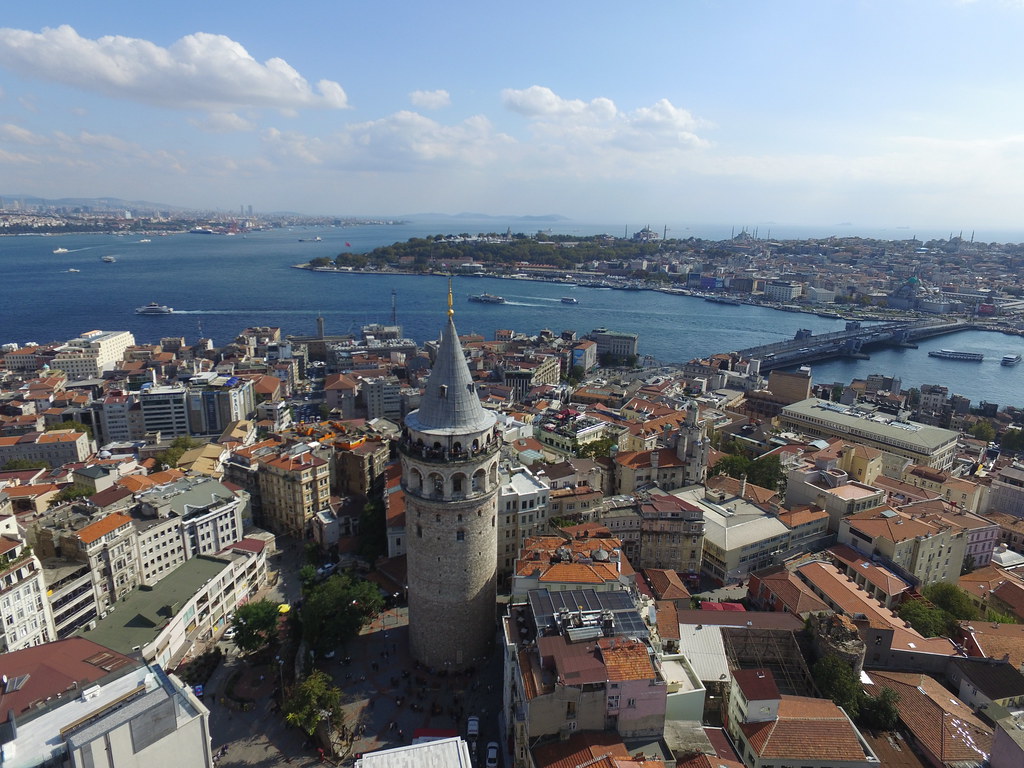
Galata Tower is one of the most prominent landmarks of Istanbul, and it is situated in Galata on a hill overlooking the historical peninsula of Istanbul 360 degrees. The origin of the Galata Tower goes back to the fifth century CE when Byzantines built a wooden tower named Megalos Pyrgos (Great Tower) to control the city of Constantinople and Golden Horn. Due to the fires, earthquakes, and the Sack of Constantinople by the Fourth Crusaders in 1204, the wooden tower was destroyed. In 1348, the Genoese community living in the Pera (Galata) district built today’s Galata Tower and named it Christea Turris (Tower of Christ). Read more
Istanbul Modern
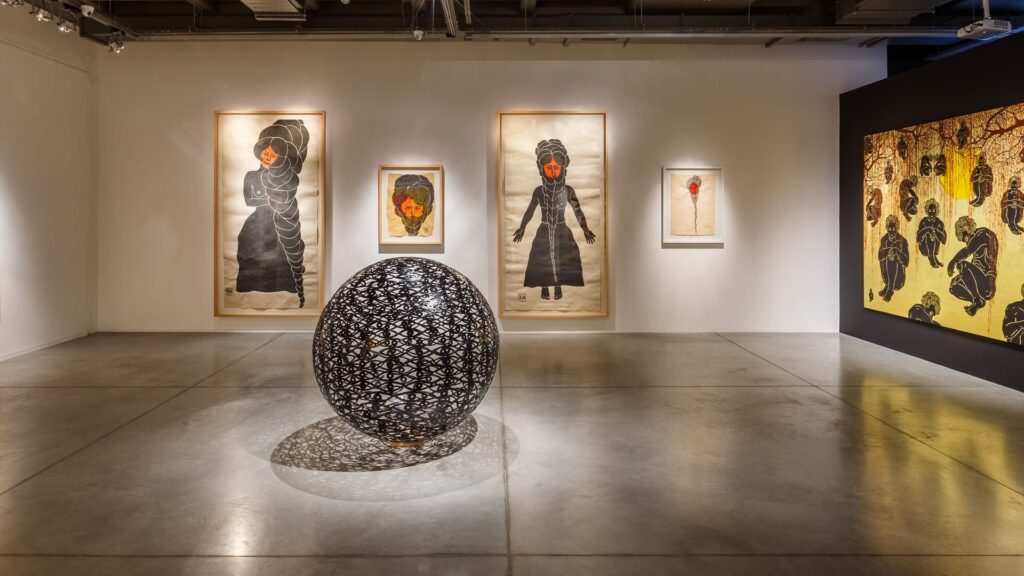
Proving that Istanbul isn’t just about historic sightseeing, this thoroughly up-to-the-minute art gallery holds an extensive collection of Turkish modern art with an ever-changing calendar of exhibitions, hosting both local and international artists throughout the year. This is by far the best place in town to get your finger on the pulse of Turkey’s contemporary art scene. The galleries are temporarily hosted in a historic Beyoglu building while they wait to complete this art museum’s new permanent home in Karaköy.
Pera Museum
Istanbul’s most famous art gallery is the lovely Pera Museum, where art hounds head to drink in one of the world’s finest collections of Ottoman-era paintings. In addition to the art, make time to wander through the rest of their collection, which includes plenty of ceramics and other Ottoman-period objects. The program of regularly changing exhibitions often displays some of the art world’s biggest names.
Istiklal Caddesi and Taksim
The ever-busy pedestrian avenue, Istiklal Caddesi, has a polarising effect on visitors and locals alike. At times, drawing over 3 million people daily on weekends, it’s hard to know whether the street is a tourist attraction or you are. Taksim Square is an excellent place to start, a symbolic location for many Turks and the meeting point for demonstrations and protests. From there, stroll down Istiklal Caddesi, stopping at the vast shopping opportunities and cafes.
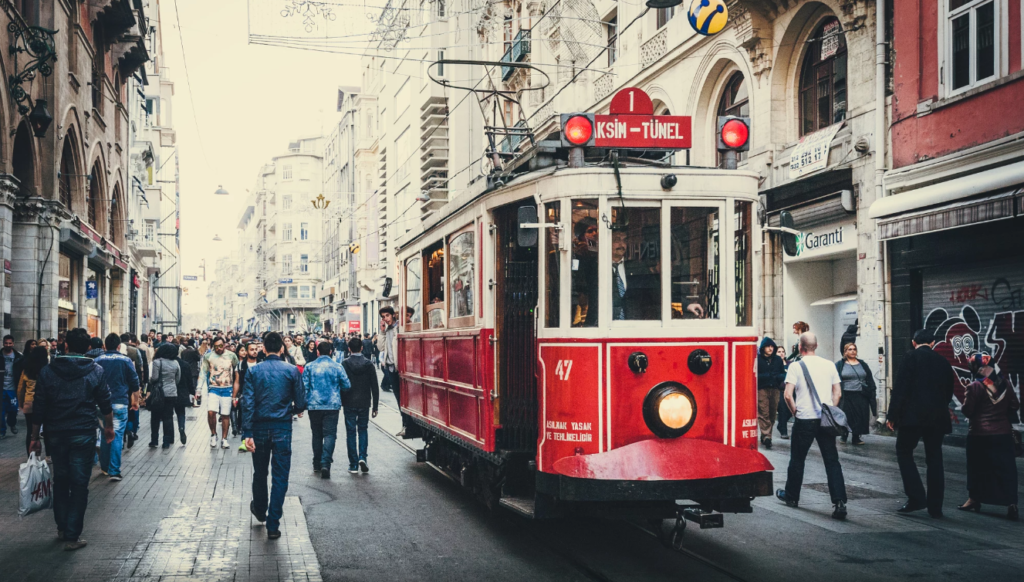
Historic buildings, churches, modern art galleries, and a few hidden passageways exist. Please ensure you duck into the Hazzopulo Passage, which Ottoman Greeks populated in the 19th century, and the Suriye Passage, with its second-hand retro stores.
Ortaköy
Ortaköy is a lovely İstanbul neighborhood beside the Bosphorus. It’s a popular place to hang out, particularly on weekends when the local streets fill with markets. Come here on Sunday and be rewarded by a convivial atmosphere and some of the finest brunches in Istanbul. The pick of the cafes is on Firini Street. We went to Café Zemheri, but there are plenty to choose from. After brunch, stroll past the flea market – a delightfully vintage strip of humble stores – and the covered market near the waterfront. Commanding the most ostentatious position on the river is the Ortaköy Mosque. Shimmering against the Bosphorus, its intricate façade has two rows of windows illuminating the dome ceiling covered in pink mosaics.
Tophane-I Amire Culture and Art Centre
The Tophane-I Amire Culture and Art Centre houses a periodic modern art exhibition. A vast, cavernous area constructed of red brick and white stone with large arches provides the perfect stage for some incredible contemporary art. The lower reaches of the building house a rotating exhibition of eclectic modern art.
Museum of Innocence
The Museum of Innocence is an exhibition based on the novel of the same name by the author Orhan Pamuk. It evokes İstanbul of the 1970s, with objects displayed in cases corresponding to the chapters in the book. The ground floor contains a spiral representing the present moment, from which the objects of the museum link moments in the characters’ lives. But you don’t need to have read the book; it’s interesting enough without the backstory. Read more
Kadıköy
While Istiklal Caddesi is great for people watching and indulging in the tourist side of Istanbul, Kadıköy on the Asian side is a more local experience. With a young student population and a host of local markets, it’s a great way to see a different side of Istanbul. Soak up the vibrant atmosphere with a stroll around Kadıköy Square and Fenerbahce Kalamis, grabbing a spot at one of the many cafes for people-watching. Pop into the busy collection of shops along Bahariye Street, admire the catch at the fish market, and peruse the second-hand bookstores on Tellalzade Street. Finally, join the locals for a meal at Çiya Sofrası. Serving southeastern Turkish delicacies was one of our favorite things to do in İstanbul.

